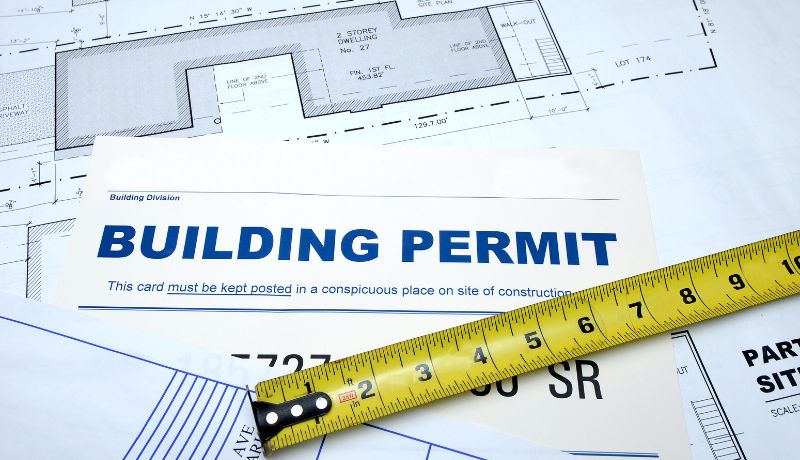The Mayor of New York, Bill de Blasio was apparently dreaming of Mark Twain’s “The Adventures of Tom Sawyer” when he neglected to file for permits before putting up a new fence at Gracie Mansion. If you recall, Tom Sawyer famously persuades the local children to do his chore of painting the all-American white picket fence while getting paid for the privilege to do so.
As noted in a recent New York Post article de Blasio never pulled permits for the new fence around Gracie Mansion on East End Avenue and 88th Street. ”Plans for the eyesore fence should have gone before the city’s Design Commission for review— but never did, a City Hall source also admitted.
Renovations Plans and Permits
The job was finished in November.” As reported by the New York Posts writers Yoav Gonen, Larry Celona, and Shawn Cohen in their articles on December 11th and 13th 2014. As a companion to my blog article titled: ”Renovations Plans and Permits” published Nov. 20, 2014, even the Mayor isn’t exempt from the Building Department permit rules.
Furthermore, The New York Post article also purported the Parks Department paid $4,250 for the approximately 30-paneled section fence. Ironically, I currently have a listing, which already had a fence in the back of the yard and recently installed a 6-foot height fence on the sides of a much smaller irregular lot (right 95’ and left 84’) with two small gates in New Jersey for $4,000, so it appears the Park’s Department’s quoted fence price of $4,250 for the Gracie Mansion fence is a below-market, deep discounted price.
Department of Buildings (“DOB”)
In Manhattan and the boroughs, we do not often think of erecting a fence, especially a white one that is 10 feet high on the 1799 revolutionary site of the Gracie Mansion. But if you do decide to incorporate some additional security, privacy, a pool or a means to keep the children and dogs around your residence safe, it is the law to request approval from the Department of Buildings (DOB). Although you may own your property you can’t enhance the premises with a fence, shed, patio, removing or adding trees, etc. without first verifying if a permit is required. And in cases where it is required, you need to follow the DOB guidelines.
The DOB constantly updates its permit guidelines, so it’s especially critical to review current standards. Today’s fence guidelines in New York City require a permit for fences taller than 6 feet high:
If you want to build a fence over 6 feet high, you need to complete the PW1 Application:
You do not need a permit for a fence shorter than 6 feet.
Permit Application
To apply for a Fence Permit, download the PW1 Plan or Work Approval Application form online or pick it up at a DOB) Borough Office. The City’s Design Commission must review and sign off on proposed projects.
Other key facts to keep in mind before installing a fence:
1. Dig Safely N.Y. Before You Dig.
Also, referred to as Joint Utility Locating Information for Excavators (JULIE) must be called by dialing 811 no matter how large or small a project is or how deep you plan to dig. This is imperative to determine that the fence will not interfere with any utility lines and mark the grounds.
2. Determining ideal weather conditions.
If it is raining and snowing the ground can be too soft, and when it is freezing, the ground can be too hard for the equipment to drill holes in the ground for the posts. This is why you often see new fences popping up with daffodils and tulips in the spring during ideal weather conditions.
3. Each area (town) has different fencing requirements.
Some towns require holes to be 36 inches and others 42 inches. Oftentimes an additional inspection is required to review the holes that were dug before proceeding forward.
4. There is also an “inside-out rule”.
Requires the better side of the fence to face the neighbors. Fence posts typically should be on the side of a person who owns the fence.
5. Specific areas may also have additional rules.
as to the type and/or height of the fence to maintain a certain aesthetic.
6. Land is not level.
The land is not level and requires a custom-built to meet the contours of the land.
7. Maintain good neighborly relations.
By discussing your plans of putting up a fence with your neighbors. Review the survey together and establish buy-in, and ensure you are not encroaching on their property line. Plus, discuss maintenance plans with your neighbors. Usually, the law requires the party erecting the fence to maintain both sides of the fence, but perhaps you can come to a ‘win/win arrangement since you both will benefit from the fence. No, thy boundaries. Nothing is more painful than having irate neighbors.
Lessons Learned
Finally, three lessons to keep in mind:
1) Don’t follow the leader or the crowd, they usually steer you in the wrong direction;
2) Conduct your own due diligence to derive the proper steps to follow when starting a home project by reaching out to experts at the DOB, as well as your neighbors;
3) Lastly, request quotes (bids) from licensed service providers with a good track record for all construction projects. Ensure these bids comprise the scope and timing of the project inclusive of labor, material, and permit costs.
Conclusion
Abide by these steps and you will avoid hefty fines for violations, surprise project costs, and happy neighbors enabling you to meet your objective and have peace of mind. As Will Rogers, American Humorist stated: “There are three kinds of people. The one that learns by reading. The few who learn by observation. The rest of them have to pee on the electric fence for themselves.” Which one are you?
Other educational articles about the market and your home search are under Karen’s Blog.


